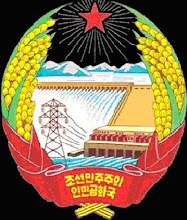AUGUST 15, 1945 - DAY OF RESTORATION OF THE FATHERLAND
For twenty years there was a long tense, bitter armed struggle for the revival of enslaved by the Japanese – the Motherland of Korea. This struggle was headed, while still quite young, by Kim Il Sung. On October 17, 1926, the future great leader Comrade Kim Il Sung formed the Down with Imperialism Union (DWIU), and on May 5, 1936, he founded the League for national liberation. He formed guerrillas who attacked the Japanese, did not allow them to live in peace, permanently damaging the manpower and arming themselves with weapons captured from the them. Japan in the 1940-s of the twentieth century, did not officially go to war with the Soviet Union, but held in the Far East the largest armed force in the face of the Kwantung Army of a million, choosing the time of the attack on the USSR. Only in Korea did the Japanese during World War II, built four fortified areas, concentrating a huge amount of military equipment there.
The organized armed struggle against the Japanese began with the creation of Kim Il Sung's guerrilla groups. The guerrillas brought a lot of trouble to the Japanese. The armed struggle for the liberation of the motherland has become ever more powerful and more dangerous for the Japanese. Though of course, to fight against the heavily armed and well equipped with arms, ammunition and food regular Kwantung Army was very difficult. The victory was not achieved to easily. But so great was the hatred for the oppressors, that th guerrillas soon grew into the anti-Japanese People's Revolutionary Guerrilla Army, which later became the basis of the Korean People's Army.
The end of World War II in Europe did not mean the end of hostilities in North-East Asia. In August 8, 1945, the Soviet Union, the faithful to allies and international duty, carrying out the commitments adopted at the Teheran and Yalta conferences, today declared a state of war with Japan. On August 8, 1945 the Soviet army inflicted a devastating blow to the Japanese. On August 9, 1945, Comrade Kim Il Sung gave the order to all units for a general offensive for the liberation of the motherland. The troops, who were on the initial positions, carried out operations made according to an operational plan predetermined by Kim Il Sung.
The troops who focused on the basin of the river Tuman (border with the USSR), breaking through the border reinforced by the Japanese, liberated the border regions and captured a vast territory of Korea. The remains of the Kwantung Army, defeated the Soviet army, demoralized and fragmented, still continued to resist. But it was already the end for them. On August 15, 1945 Japan announced its unconditional surrender. Officially, the victorious military campaign of the USSR against Japan lasted 24 days.
Korea started the construction of a new life. At a rally in Pyongyang on October 14 people enthusiastically greeted Kim Il Sung.
"You could say that the people's jubilation on October 14, 1945 in Pyongyang stadium was a public evaluation and compensation for the fact that we had overcome all difficulties and hardships, fighting for the motherland and the nation for half their life. I saw it just as a reward, as an expression of love and trust of the people. I often say, where on earth can be more happiness than the love and support of the people? ..
I was so touched by this trust that people gave me, and I believe this to be the greatest happiness that I experienced in my life." Kim.Il Sung "With the Century" - memoirs.
At the heart of Pyongyang stands a great triumphal arch in honour of Fatherland Liberation Day.
We congratulate the heroic Korean people and its glorious leadership on Fatherland Liberation Day.
We wish the DPRK's complete victory over fascism today - American-Zionist Nazism.
Such people as a nation as the DPRK will never be beaten!
CC AUCPB
Friday, 9 September 2011
Subscribe to:
Post Comments (Atom)

No comments:
Post a Comment